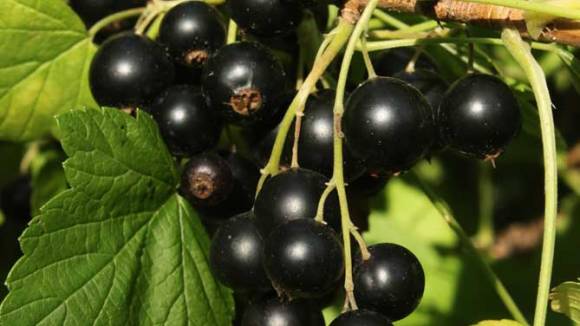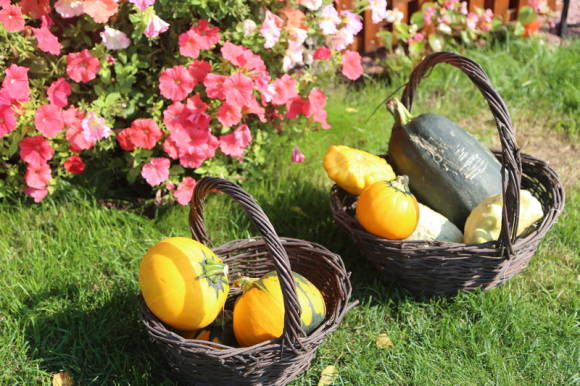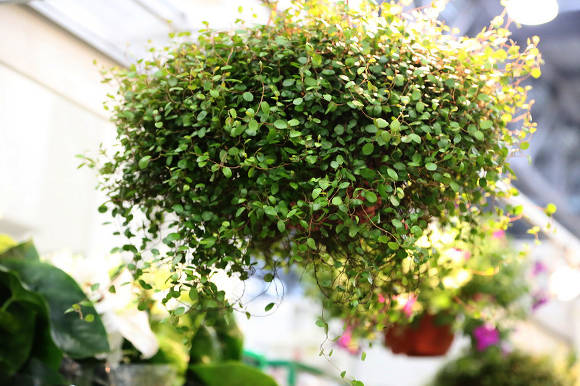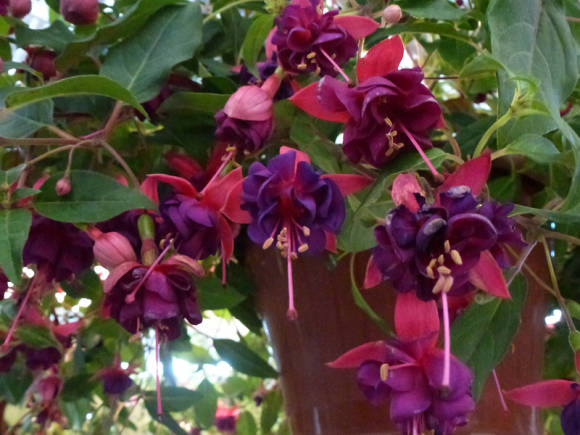History of cinnamon use

Cinnamon was used in China as early as 2800 BC, as evidenced by the book on the plants of Emperor Shen Nung Kwai. Many Chinese recipes include this spice. It is still believed that it improves mood and cheers, maintains and strengthens the strength of the brain, heart and liver, and improves vision. It is rubbed on the forehead and temples for headaches of a cold origin.
Eastern doctors are sure that cinnamon has a diuretic effect, is useful for dropsy, palpitations, nervous disorders, wet cough, loss of voice, non-healing and festering wounds. Cinnamon is widely used in pharmacy to improve the taste and smell of medicines.
The ancient Egyptians used it for embalming and fighting epidemics, it is mentioned in the Bible. Most likely, Egyptian cinnamon during the time of the pharaohs was mainly from China, where large thickets of trees were located around the city of Kweilin (now Guilin). Translated from Chinese, "kwei" means cinnamon, "lin" means forest.
Ancient Jews used it in religious ceremonies. The Roman Empire imported large quantities of cinnamon for perfumery, perfume and wine flavoring, but it was not widely used in cooking. In the Middle Ages, cinnamon was imported to European countries from Egypt, where it was brought by Arab merchants from Ceylon. The cinnamon trade in the 13th and 14th centuries was controlled by Venetian merchants. The spice trade was one of the main sources of income that allowed Venice to get rich. The word canella, which means cinnamon in Italian, means something rolled up into a tube. By the way, hence the name of one of the types of pasta - canelonne, which is a thick tube with meat, vegetable or mushroom filling.
The real Ceylon cinnamon was discovered for Europe by the Portuguese at the end of the 16th century, after the travel of Vasco da Gama and the capture of large territories in Southeast Asia. Portugal fiercely guarded its monopoly of the cinnamon trade, which was grown on the plantations of the island of Ceylon.
The growing demand for cinnamon led to wars between the Dutch and Portuguese in the mid-17th century. As a result, the Ceylon cinnamon trade passed into the hands of the Dutch. In the 18th century, many Dutch settlers were wiped out by a local revolt, allowing the Portuguese to regain control of the cinnamon plantations in Ceylon, making cinnamon more readily available. To keep prices down, the Dutch declared a state monopoly on cinnamon in 1760, for this they burned a large amount of raw materials in Amsterdam and this spice became available only for "haute cuisine" dishes.
In 1795, after the capture of Holland by Napoleon, the British captured Ceylon and, accordingly, the plantations. However, the monopoly did not work anymore. Not long before this, extensive cinnamon plantations were established by the Dutch in Indonesia, and by the French in Mauritius, Reunion and Guiana. The elitism of Ceylon cinnamon continued to fall constantly and the fashion for it began to pass. After the interest in it fell in France, it continued to be actively used in Quebec (the French part of Canada). Interestingly, cinnamon now grows in Egypt, where it was introduced in the 19th century by the French, who planted seedlings from the Paris Botanical Gardens.
It became a favorite spice for holiday meals and was seen as a digestive aid and cure for coughs and throat ailments. In the Middle Ages up to the 18th century. Cinnamon has been widely used as a digestive stimulant. It was believed that cinnamon increases the secretion of gastric juice, stimulates the respiratory system and the circulatory system. She was especially appreciated as an aphrodisiac.Having crossed the ocean, cinnamon has become very popular in the manufacture of confectionery, tea and coffee flavoring, and has taken root in Mexican cuisine.
Botanical description

The name of the spice comes from the Malay "kayumanis", which means "sweet tree". Several species are used under the name "cinnamon", therefore, the distribution around the globe is quite extensive. But still, the main center of origin of the genus Cinnamon (Cinnamomum) in general, it is considered to be Southeast Asia, India and the Pacific Islands. Cinnamon is an evergreen tree and shrub from the Laurel family with thick bark, bright green leathery leaves and small white flowers.
The most valuable raw material gives ceylon cinnamon (Cinnamomumceylanicum Blume). This is an evergreen tree or, in culture, a shrub. Branches are cylindrical, triangular at the apex, with opposite leaves, on short petioles. Leaves are oval, bluntly or shortly pointed, leathery, with 3-7 main veins.
Natural habitats of Ceylon cinnamon - Sri Lanka, South India, Burma, Vietnam, Indonesia, Japan, Madagascar, Reunion, etc.
Along with Ceylon cinnamon, they use cinnamon chinese (Cinnamomumcassia (L.) C. Presl.), found only in culture - in southern China, Brazil, Madagascar, etc. Chinese cinnamon is an evergreen tree up to 15 m tall. The lower leaves are alternate, the upper leaves are opposite, drooping, on short petioles. The leaves are broadly oval, whole-edged, leathery, shiny green on the upper side, with deepened main veins, bluish-green on the lower side, covered with short soft hairs. The flowers, collected in paniculate inflorescences, are small, yellowish-white, with a simple separate-petalled pericarp. The fruit is a berry.
What is used

Bark is harvested from both species. The bark of Ceylon cinnamon is more prized than Chinese cinnamon. The best varieties are obtained exclusively from cultivated plants. The bark is collected from cut bushes, when new shoots reach 1-2 m in length. The bark is cut off with a copper knife and its outer parts (peridermis and primary cortex up to the sclereid layer) are removed. After that, the bark is rolled up into double or triple tubes and dried in the sun. The bark is light brown in color, it is very thin, often no thicker than a sheet of paper (0.2-0.5 mm).
Chinese cinnamon is a bark in the form of tubes or grooves with a thickness of 1-3 mm, the outside is dark brown, sometimes covered with a layer of cork, but more often it is removed; the break is even. The smell is fragrant, pleasant; the taste is sweet, pleasant and slightly astringent.
Other wild types of cinnamon are also used as substitutes for cinnamon, the bark of which is thicker and coarser and has a less pleasant aroma: CinnamomumobtusitoliumNees and WITH. laureiriiNees from the northern regions of Vietnam. These types of cinnamon are of lesser importance than the previous two, are used mainly in Vietnam and are considered to be of inferior quality. The raw material is rather thick, rough to the touch, small pieces of dark brown bark. Almost never in the form of tubes.

Cinnamomumburmannii (Nees et T. Nees) Blume is imported from about. Java, etc. White cinnamon bark - Cortex Canellae albae or Cortex Winterani (Canellaalba Murr., Family Canellaceae).
The bark removed from the branches of the tree is freed from the cork layer and looks like grooved pieces, reddish-white outside; the inner surface is white; on a cut under a magnifying glass, numerous secretory receptacles are visible. The aroma is similar to the smell of cinnamon, the taste is spicy, bitter. Contains essential oil (up to 1.3%), resin (about 8%) and other substances. It is used in the same way as cinnamon.
 |  |
What cinnamon contains

The aroma of Ceylon cinnamon is thinner than Chinese cinnamon, so it is valued much higher. Essential oil (about 1%, but can even reach 4%) consists mainly of cinnamic acid aldehyde (65-75%) and eugenol (up to 10%). The presence of small amounts of fellandrene, cymene, pinene, linalool, furfural, phenylpropanes (safrole and coumarin) makes the aroma of the oil softer and more refined. For the production of essential oil, first of all, trimmings and other waste are used. In addition to essential oil, mucus is present in the raw material (about 3%).
The bark of Chinese cinnamon contains phenylpropyl acetate, various terpenoids - zincassiols and their glycosides.It also contains 1-2% essential oil (in which at least 80, and more often 90% or more cinnamaldehyde), condensed group tannins and mucus, neutral polysaccharides containing L-arabinose and D-xylose.
Vietnamese cinnamon can contain 1 to 7% essential oil, which is a record for cinnamon. Like Chinese cinnamon, the oil is composed primarily of cinnamaldehyde and only traces of eugenol are found.
Cinnamon essential oil

Main action: Outwardly, mixed with vegetable oil (2-3 drops per 10 ml of base) is used for rheumatism, lice, scabies, fungal skin lesions and wasp and bee stings. It has good antiseptic properties. Used for colds, flu, laryngitis, tracheitis, pneumonia. Outwardly, oil is used for warts and papillomas, applying only to the affected area. Stimulates the work of the gastrointestinal tract and improves digestion. Ideal for fermentative dyspepsia. Improves peripheral circulation and is a good remedy for cold extremities.
Contraindications: pregnancy and chemotherapy treatment of tumors. When applied externally, be sure to use in a diluted state, as it has a strong irritant effect. It should be noted, however, that cinnamon has long been known as a cause of contact dermatitis in bakers and confectioners. The high irritating activity of cinnamaldehyde is also manifested when using cinnamon in toothpaste.
For all its deliciousness, with prolonged contact with large amounts of cinnamon, numerous undesirable reactions are observed. A group of 40 workers in constant contact with cinnamon dust were observed over a four-year period. The results were somewhat discouraging - 90% of them showed manifestations of symptoms of intoxication: asthmatic disorders (25%), skin irritation (50%), hair loss (38%), burning eyes during work (23%), weight loss (65 %). Naturally, we are not talking about one bag in the kitchen cabinet here.
Cinnamon in aromatherapy
If you are fond of aromatherapy, then pay attention, when buying cinnamon oil, that there is an indication of which part of the plant it is obtained from. The raw material for obtaining essential oil can be the inner part of the bark, which is collected during the rainy season, when it is easily separated, and young shoots. The oil will smell like cinnamon rolls. The essential oil is obtained by hydrodistillation, that is, by steam distillation. It is a yellow liquid with a spicy aroma. About 5 tons of essential oil are produced in the world annually.
Sometimes leaves or shoots are used for distillation. The leaf oil contains mainly eugenol (up to 96%), cinnamaldehyde (up to 3%), small amounts of benzyl benzoate, linalool and β-caryophyllene, and is characterized by a yellow or brown color and a warm spicy aroma.
Accordingly, these two products will be very different in their properties and use in aromatherapy. Leaf oil is good for skin and gum care. Helps with dermatomycosis and insect bites. It is used for scabies and head lice, that is, in its properties it is closer to cloves, as a substitute for which it is sometimes used.
The essential oil of the root bark is 60% camphor and has no industrial value. And the fruit oil consists mainly of trans-cinnamyl acetate and β-caryophyllene.
The healing properties of cinnamon

Cinnamon preparations have been shown to be effective in treating resistant forms of oral candidiasis (thrush) in HIV-infected patients. In a limited clinical trial, the ineffectiveness of oral administration of alcoholic extract of cinnamon as a monopreparation against Helicobacterpylori - a microorganism that causes stomach ulcers.Clinical study showed that oral consumption of 1-6 g of cinnamon for 40 days reduced the concentration of glucose, triglycerides, cholesterol complex with low density lipoproteins and total cholesterol in serum of patients with type II diabetes, which confirms the effectiveness of including cinnamon in the diet to reduce risk factors with this disease. Due to its high concentration of cinnamaldehyde, Ceylon cinnamon essential oil invitro has a high fungicidal activity against 17 species of micromycetes.
Cinnamon is recommended as a tonic for fatigue and loss of appetite, for asthenia after a flu. When mixed with warm wine, it acts as a medicine that strengthens and accelerates blood circulation and can protect against flu or colds. For hypertensive people, folk healers recommend taking cinnamon with honey or yogurt.
In traditional Chinese medicine, preparations from the bark of the trunks are prescribed for impotence, frigidity, feeling cold, pain in the lower back and knees, for shortness of breath with renal failure syndrome. In addition, it is used for dizziness, eye inflammation, sores in the throat, according to the Chinese, caused by a deficiency "Yang", as well as with heart and abdominal pains, accompanied by a feeling of cold, with vomiting, diarrhea and neurotic flatulence, as well as with amenorrhea and dysmenorrhea.
Cinnamon bark is included in the British Herbal Pharmacopoeia and is used in European medicine. It is used as a spice, as well as an antispasmodic, tonic, improving digestion, antiemetic and antiseptic.
It is used as a means of stimulating the activity of the digestive organs, as an antiseptic and to correct the odor of medicines.
Cinnamon is part of a dietary supplement designed to facilitate smoking cessation.
Homemade recipes
In French herbal medicine, along with other spices, cinnamon is considered an aphrodisiac, i.e. a means that can enhance libido. A good remedy for asthenic, anxious and depressive conditions, and also helps to overcome the consequences of a feast with a lot of alcohol. Inside take 1-2 drops of oil with a spoonful of honey or herbal tea for colds and flu.
With spasms of the gastrointestinal tract, relaxes smooth muscles. Take when you feel bloated and overcrowded. The infusion is prepared from 1 g of powder and 150 ml of boiling water. Insist for 10 minutes, filter and take before meals. The daily dose should not exceed 2-4 g, depending on the patient's weight.
The same infusion with lemon and honey is very effective for colds and viral diseases.
For gourmets
Currently, cinnamon is very widely used in European cuisine, in the Near and Middle East, North Africa from Morocco to Ethiopia.
In India, vegetable oil is flavored when vegetables are fried. First, pieces of cinnamon bark are thrown into the heated oil and heated to release the aroma, and only then the vegetables are fried.
The bark is widely used in mixtures: curry (India), galat dagga (Tunisia), ras el hanut (Morocco). In China, cinnamon is a traditional five-spice blend.
Cinnamon Recipes:
- Pickled pumpkin with orange peels and spices
- Spicy chutney with plums, cinnamon and ginger
- Pork in jelly with fennel, wild garlic, ginger and cinnamon
- Eggplant kebab with spices
- Zucchini jam with lemon and spices
- Okra curry
- Ivan tea with rice and dried apricots
- - Apple strudel









